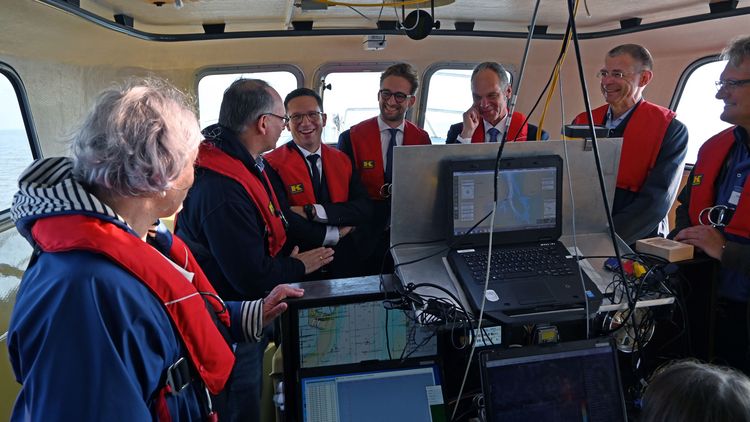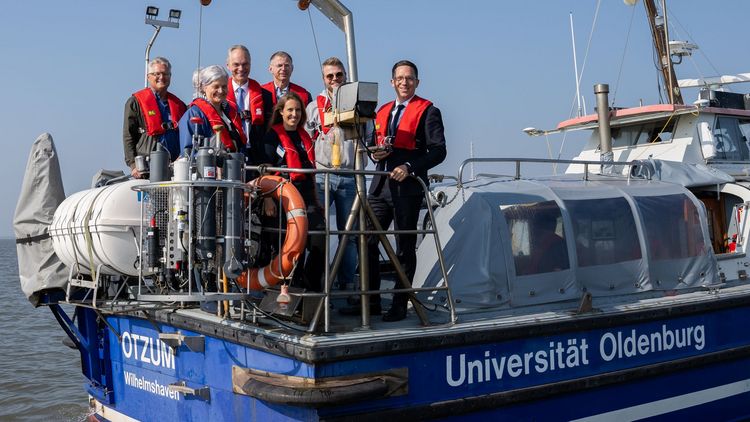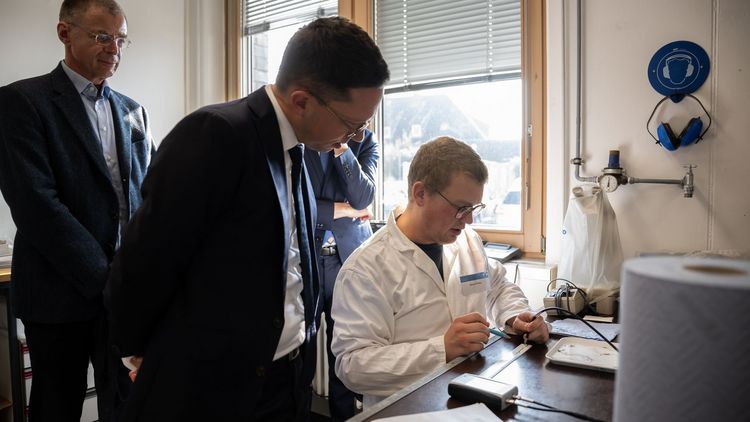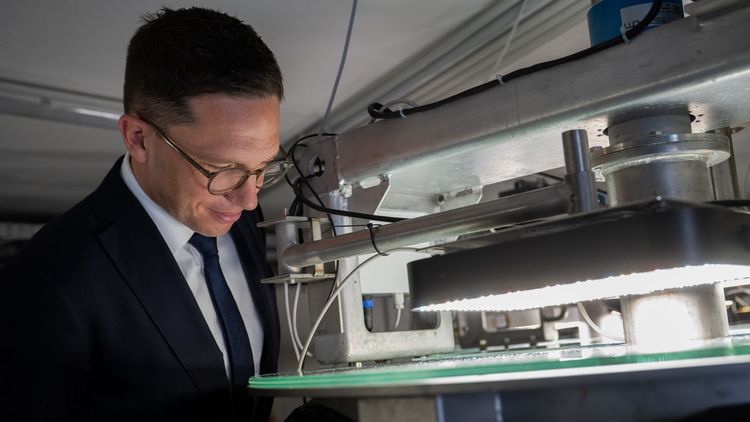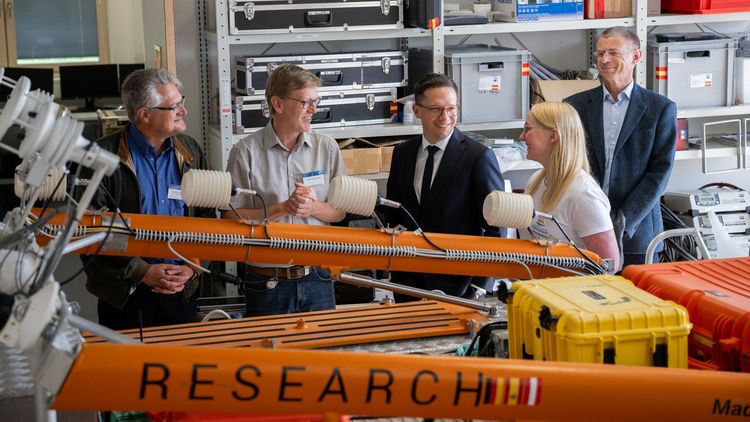Last Friday, Lower Saxony's Science Minister Falko Mohrs was able to experience marine research hands-on: as a guest at the Institute for Chemistry and Biology of the Marine Environment (ICBM) in Wilhelmshaven, he set out on the North Sea on the research boat Otzum to see various research equipment in action. Among other things, the minister took water samples together with the scientists and deployed drifters equipped with GPS transmitters. Also on board were University President Prof. Dr. Ralph Bruder, Vice President Prof. Dr. Ralf Grüttemeier, Vice President Prof. Dr. Katharina Al-Shamery as well as ICBM Director Prof. Dr. Ralf Rabus and Deputy ICBM Director Prof. Dr. Heinz Wilkes.
Mohrs had previously visited various ICBM laboratories and learned more about current research projects and unusual devices, such as the so-called planktotrons. These steel tanks, which hold 600 liters of water, enable researchers to set various environmental parameters with precise accuracy and thus simulate different environments. The Minister was able to explore exotic underwater worlds in the aquariums of the Environmental Biochemistry working group, whose members have succeeded in reproducing corals sexually. Before heading to the Otzum, Mohrs was able to see the autonomous research catamaran in the institute's hangar and watch the drifters he would later launch being built in the laboratory.
The minister's conclusion: “Although around 70 percent of the earth is covered by water, mankind has only explored a small part of the oceans so far. The Institute for Chemistry and Biology of the Marine Environment has set itself precisely this task. The researchers from various disciplines are making a significant contribution to deepening our understanding of marine environmental systems, particularly on the coasts, and to understanding their processes of change as a result of climate change.”

![[Translate to English:]](/f/5/_processed_/3/2/csm_ICBM-Logo-transparent-_91fe1c6774.png)
